34 King Vulture Facts: World’s Most Colorful Vulture (Sarcoramphus papa)
Have you heard about Ecuador’s king vulture? In this post, you’ll learn 34 king vulture facts, including diet, size, wingspan, habitat, unique features and more. Plus lots of photos of the world’s most colorful vulture.
Travel tip: If you’re traveling to the Amazon basin, you should bring a camera with a good zoom and a decent pair of binoculars. These will increase the odds of spotting and shooting a king vulture in the wild.
34 King Vulture Facts: World’s Most Colorful Vulture
Vultures usually don’t rank at the top of birder’s lists of favorite birds, but you may find the king vulture has some pretty interesting and favorable traits. Not only is it a surprisingly colorful vulture, but it also values cleanliness and provides an important job in the ecosystem.
Ready to learn more about this intriguing bird? Check out the following 34 king vulture facts.
King Vulture Overview (Sarcoramphus papa)
- Latin name: Sarcoramphus papa
- Range: From Mexico down to southern Argentina
- Population Status: Fewer than 50,000 individuals
- Size: Height: 28 to 32 inches (71 to 81 cm) Weight: 7 to 9 pounds (3.17 to 4.08 kg)
- Wingspan: 4 to 6.6 feet (1.2 to 2 m)
- Diet: Carrion
- Physical features (Or bizarre facts): Multicolored head
- Where it lives in Ecuador: Grasslands, swamps and forests (Coast and Amazon regions)
1. What does the king vulture look like?
The king vulture is unique from all other vulture species. Not only is it one of the largest vultures, but it is also the most colorful.
Contrary to other vultures that are usually black or dark-colored, an adult king vulture is mostly white with grayish-black feathers on the ruff, wing coverts and tail. Both adult sexes look alike while juveniles are mostly black or slate-gray until they are between 3 and 6 years of age.
Typical of all vultures, the king vulture features a bald neck and head that are featherless to prevent bacteria and blood accumulation when feeding.
But unlike other vultures, the bald head of the king vulture is striking with a rainbow of colors that include red, yellow, orange, purple and blue. A bright orange, fleshy wattle droops below the wide nostrils. This wattle isn’t fully developed until the king vulture is about four years old.
The king vulture also has a bright orange beak that is thick and strong enough to shred animal flesh. It also has white eyes with red rings, long gray legs, and thick, sharp claws that are used as a tight anchor while feeding.
2. How tall is a king vulture?
As the third-largest of the New World vultures, the king vulture grows to a height of 28 to 32 inches (71 to 81 cm). The female is larger than the male.
3. How much does a king vulture weigh?
An adult king vulture can weigh between 7 and 9 pounds (3.17 to 4.08 kg).
4. What is the most colorful vulture?
The king vulture is the most colorful vulture.
While there are other vultures with interesting and eye-catching features such as the lesser yellow-headed vulture and the Andean condor, the king vulture wins the award for the most colorful.
5. What is the king vultures wingspan?
The king vulture’s wingspan can range from 4 to 6.6 feet (1.2 to 2 m).
6. How well does the king vulture fly?
The king vulture can fly well and even higher than some vulture species. Because of its large size, it depends on thermal air currents that it uses to ascend and glide upon to conserve energy without needing to flap its wings.
They can also descend at great speeds as they dive down to carcass sites.
7. Do king vultures migrate?
No, king vultures don’t migrate. Instead, they range over the same large area all year round.
8. Where does the king vulture live?
The king vulture can be found living in Mexico, throughout Central America, and much of South America, from Ecuador and Brazil to Bolivia and Paraguay down to northern Argentina.
9. What is the habitat of the king vulture?
King vultures reside in a variety of habitats that include savannas, swamps, grasslands and dense tropical forests. They live either alone or in small, immediate family groups.
They are usually seen perched in the tree canopy, soaring over the trees in search of food or sunbathing with their wings outstretched. Although rare, they may also hang around village dumpsters.
10. Where do king vultures nest?
King vultures don’t put much of an effort into building a nest. They simply make their nests on the ground or in natural cavities such as hollow tree logs or rock crevices.
One of the most unique king vulture facts is that these birds purposely stink up their nests as a way of keeping predators away. How do they do this? They regurgitate their food in or around their nest.
11. Are king vultures friendly? Aggressive?
Even though they are large birds with extra sharp beaks, king vultures usually are not fighters.
Most of the time, there is no need to show aggression since most other vultures know to give way to them. However, if an Andean condor tries to pick a fight, the king vulture will usually back down rather than fight.
12. How dominant is the king vulture?
The king vulture is dominant over most other vultures except the Andean condor which is the largest of them all.
If a king vulture spots other vulture species at a carcass, it will fly down to it, and the smaller vultures will move out of the way for the “king.” But, even the “king” will politely step aside for the Andean condor.
13. How did the king vulture get its name?
There are a couple of theories that may explain how the king vulture got its name. For one, the ancient Mayans believed that this vulture was a “king” who transported messages between the gods and humans.
Another theory is that the king vulture got its name due to how all the other vultures treat it like a king. When the king vulture arrives at a carcass, any other vultures present will suddenly stop feeding and move out of the way for the king vulture to take over the feeding site.
14. How long do king vultures live?
In the wild, king vultures can live up to 20 to 25 years. In captivity, they may live a few more years.
15. What eats a king vulture? Predators and Threats
The main predators of adult king vultures are usually large cats such as jaguars which often surprise attack the vultures while they’re feeding at a carcass.
Snakes are known to prey upon the eggs of the king vultures when the parents are away from the nest. These vultures do face other threats that are mentioned in #17 below.
16. Are king vultures extinct?
No, king vultures are not extinct. However, if conservation efforts are not asserted, they could go extinct in the near future.
17. Is the king vulture endangered?
The king vulture is not endangered. It is classified as “Least Concern” on the IUCN Red List, meaning it isn’t in any critical danger of becoming extinct. Howbeit, king vulture population numbers are declining in parts of its range due to human activity, habitat destruction, poaching, and food supply shortage.
18. What do king vultures eat?
King vultures are primarily carrion eaters, feeding mostly on the carcasses of large dead animals such as tapirs, cows and oxen. But, if they are hungry, they will also feed on any other dead animals, including armadillos, fish, monkeys, sloths, caimans, and snakes.
King vultures rarely, if ever, kill their own food. Neither do they eat rotten food all the time. Most often, they will locate and feed on carcasses before the meat has a chance to decay.
However, they can eat rotten meat without becoming sick because they have stomach acid that is comparable to battery acid and digests rotting meat much better than humans can.
Even though the thought of eating dead animals is gross to us humans, king vultures (along with other scavengers) play an important role in the ecosystem. Without them, rotting carcasses would stink up the environment and cause the spread of diseases that are harmful to humans.
19. Is a king vulture a carnivore?
Yes, it is a carnivore, meaning it is a meat-eater. It obtains its food by scavenging animal carcasses.
20. How do king vultures hunt?
King vultures hunt by perching high up in the treetops to watch for other scavengers congregating around carcasses. They have excellent eyesight but a poor sense of smell.
When they spot a group of black or turkey vultures together in one area, they swoop down and scatter the other vulture species. The king vulture has a much sharper beak and can sometimes rip open tough hides that other vultures cannot budge.
21. What is the king vultures Latin name?
- Class: Aves
- Order: Accipitriformes
- Family: Cathartidae
- Genus: Sarcoramphus
- Species: S. papa
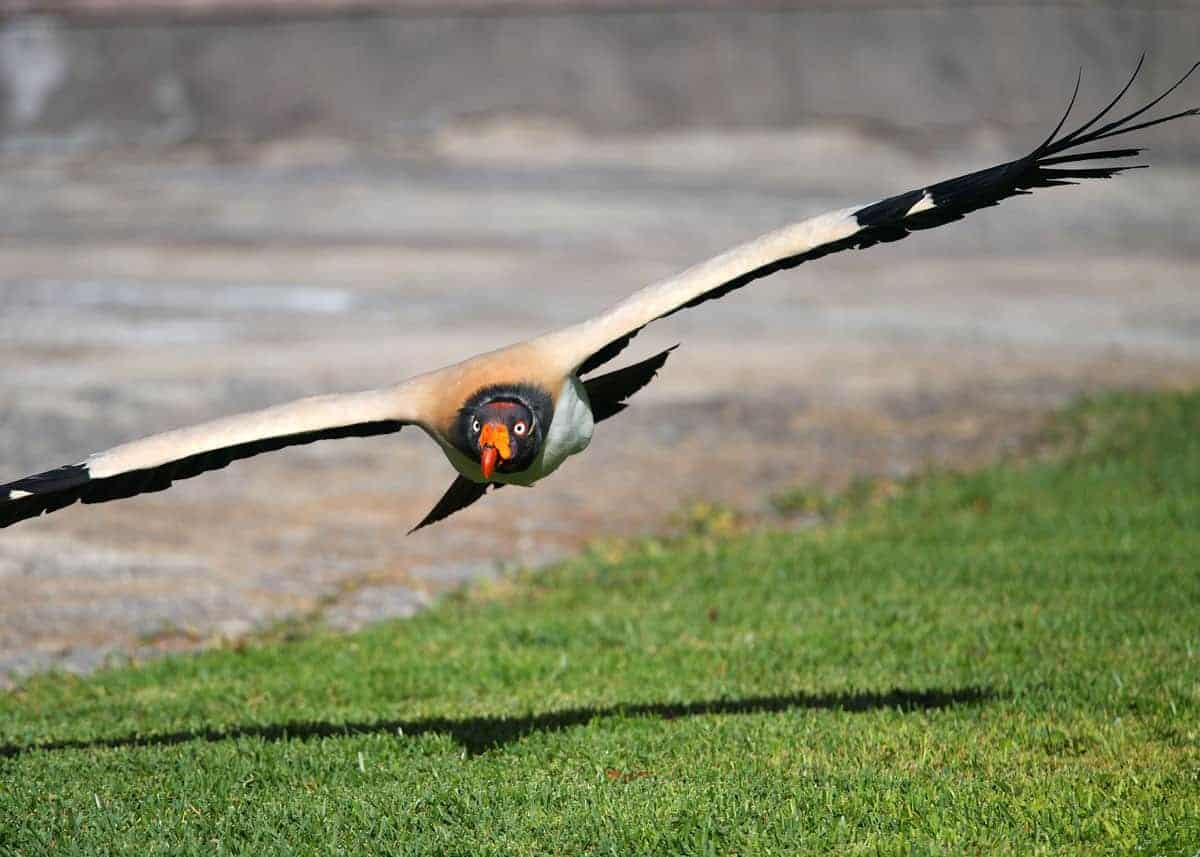
22. What other names does the king vulture have?
In Belize, the king vulture is known as the “King John crow.”
Spanish explorers in Paraguay called it the “white crow.”
To the Aztecs, the king vulture was called “cozcacuauhtli” which is a combination of “‘cozcatl” (collar) and “cuauhtli” (bird of prey).
23. Do king vultures mate for life?
King vultures do mate for life. Because they have a lifespan of 20 to 25 years, this means a pair may stay together for 15 to 20 years. King vultures usually breed in the dry season.
They have courtship displays that involve tandem flying as well as wing-flapping, circling each other, and hissing while on the ground. They begin forming permanent bonds between 5 and 7 years of age.
24. At what age do king vultures lay eggs?
Female king vultures begin laying eggs when they are sexually mature which is around five years of age.
25. How often do king vultures lay eggs?
King vultures lay eggs about once a year, breeding during the dry season.
26. How many eggs does the king vulture lay? What do they look like?
The female king vulture lays a single, cream-colored egg. Both parents take turns incubating the egg for around two months. If something happens to the egg, they will lay another one.
After the chick hatches, both parents will work as a team, bringing food back to it and watching over it.
27. What is the king vultures call?
The king vulture doesn’t really have a call since it lacks a syrinx (voice organ), but it does manage grunts, croaks, whistles, and bill-snapping especially as a warning to anything that approaches its nest.
This vulture also uses its wings to make noise. As it dives in the air, it makes a whistling or “whooshing” sound through its feathers.
28. Are king vultures loud?
No. Bcause they lack a voice organ, king vultures are mostly quiet birds.
29. Do king vultures carry disease?
Like other birds, king vultures can carry diseases such as West Nile virus which is transmitted by infected mosquitoes.
Although very rare, their droppings also have the potential of carrying bacteria, fungi and parasites that can cause serious illnesses such as salmonella, histoplasmosis, encephalitis, toxoplasmosis, and meningitis.
Most king vultures don’t hang around human habitats, so there is little chance of catching a disease from them.
30. Where can I see the king vulture?
King vultures are shy of humans and quickly fly away if approached. If you want to see them up close, they can be seen in zoos around the world.
While in Ecuador, you can see them in zoos like the Quito Zoo and Zoo el Pantanal. A good way to observe the king vultures in the wild is by exploring Ecuadorian national parks such as Cotopaxi National Park and Yasuni National Park.
31. What do baby king vultures look like?
When king vulture chicks first hatch, they are helpless and covered with gray downy feathers.
By the next day, they can wriggle around and beg their parents to bring them food. By the third day, they can peck and preen themselves.
Beginning around one month, they learn to walk and explore their nests. At about three months, they take their first flights.
32. What do king vulture chicks eat?
After they first hatch, mom and dad king vultures will bring back food to the nest in their stomachs which they will regurgitate for the chicks to eat. As the babies mature, they will eat meat directly from their parents’ beaks.
33. How do king vultures clean themselves?
Believe it or not, king vultures are sticklers for cleanliness. After feeding on carrion, they will fly (sometimes long distances) to established bathing areas in rivers to wash and preen their feathers. They also enjoy basking in the sun to dry their feathers.
34. Do king vultures defecate on themselves?
Yes, king vultures do defecate on their own legs. This may seem disgusting to us, but for these birds, this is an important process called urohydrosis that is used to cool their body temperature. Without the ability to do this, they could overheat and die.
More reading: Guide to Ecuador’s Amazon Rainforest Animals
Your Turn
So, has your opinion of vultures changed after reading these king vulture facts? What did you like most or least about this vulture? What surprised you most? Let us know in the comments section.

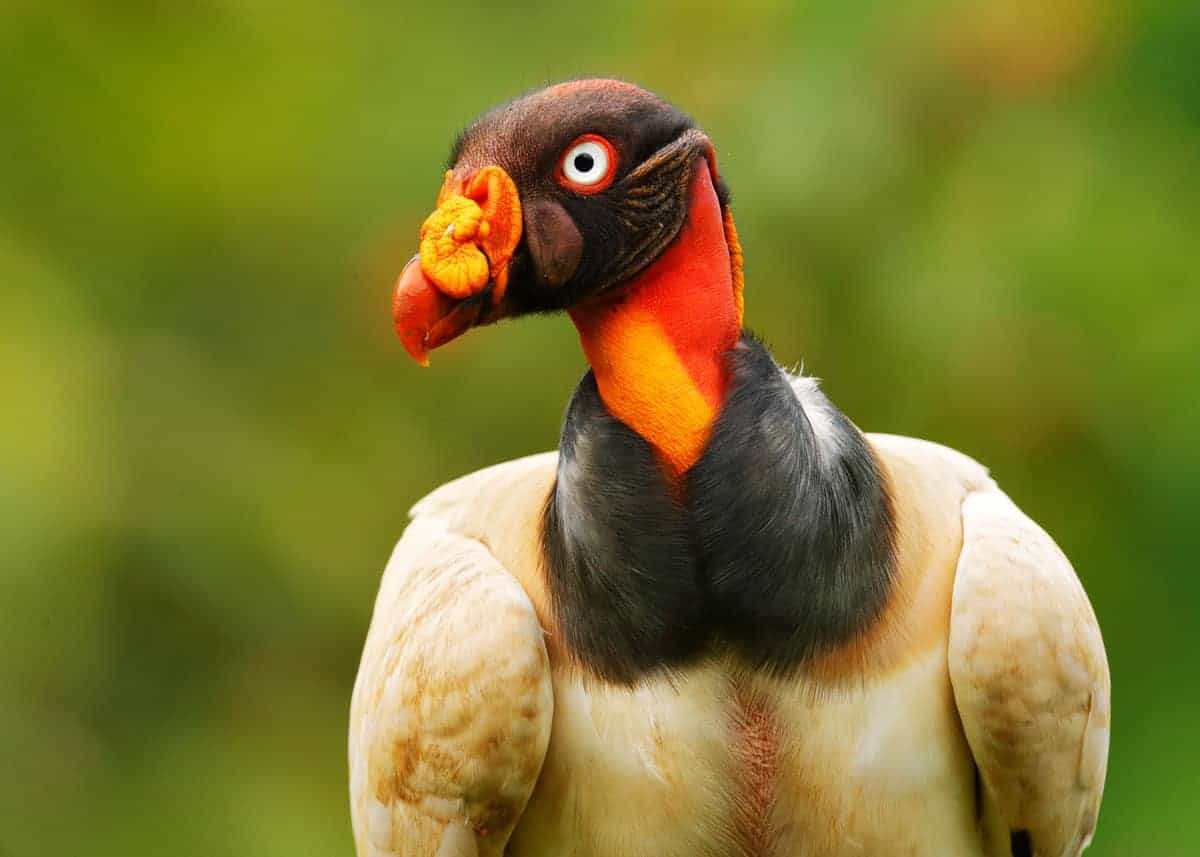
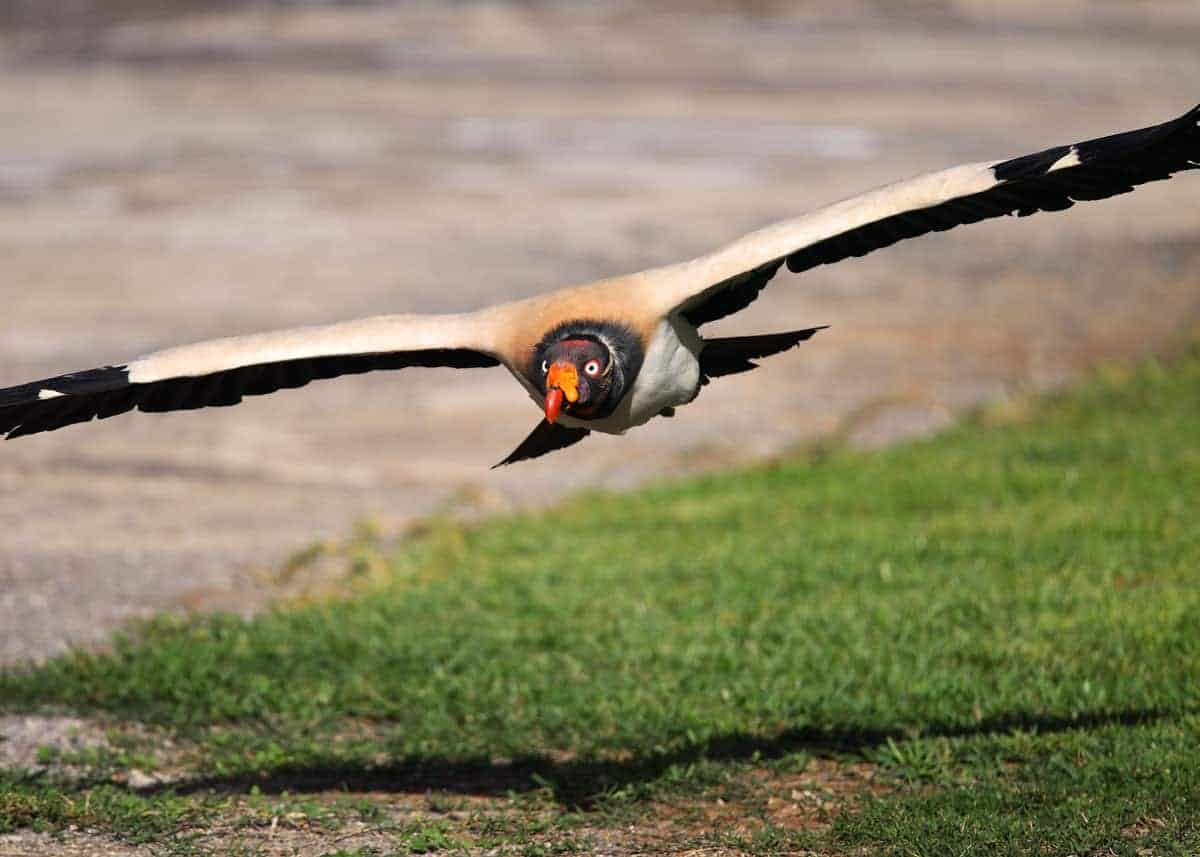
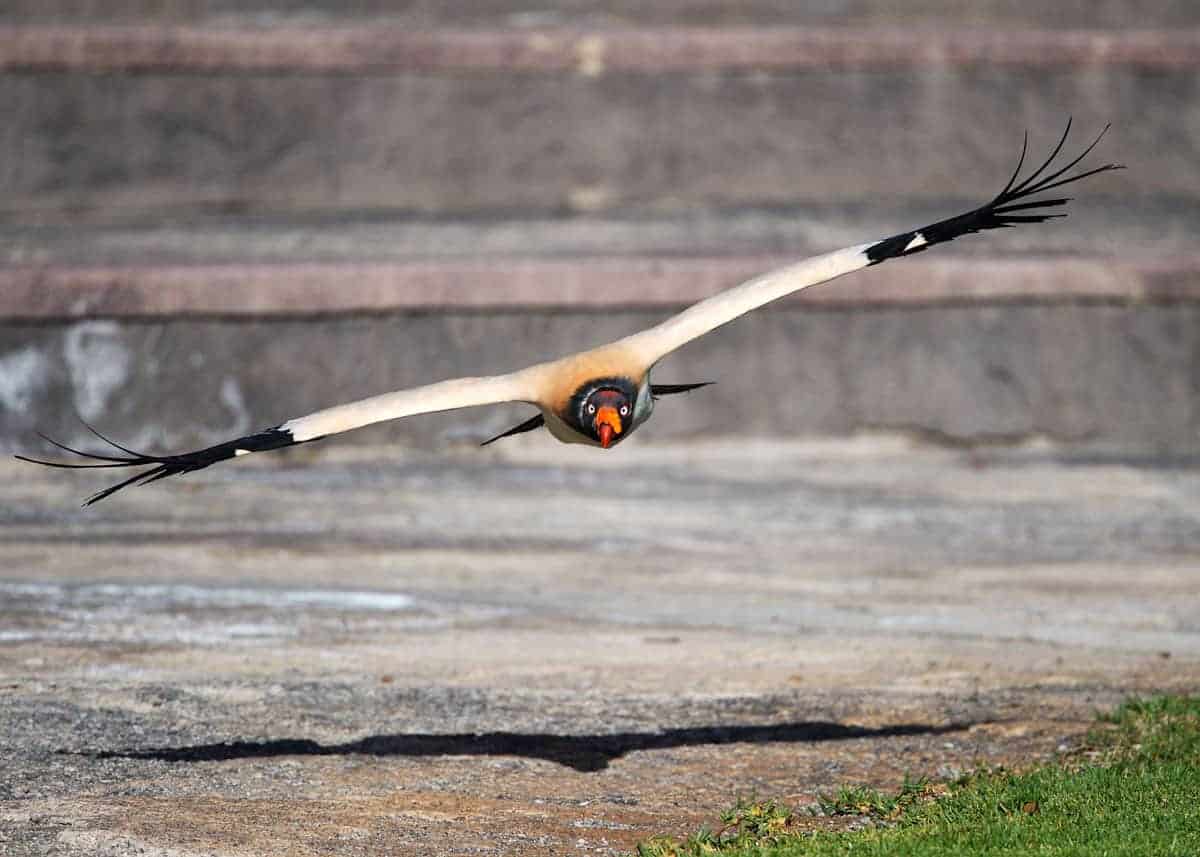
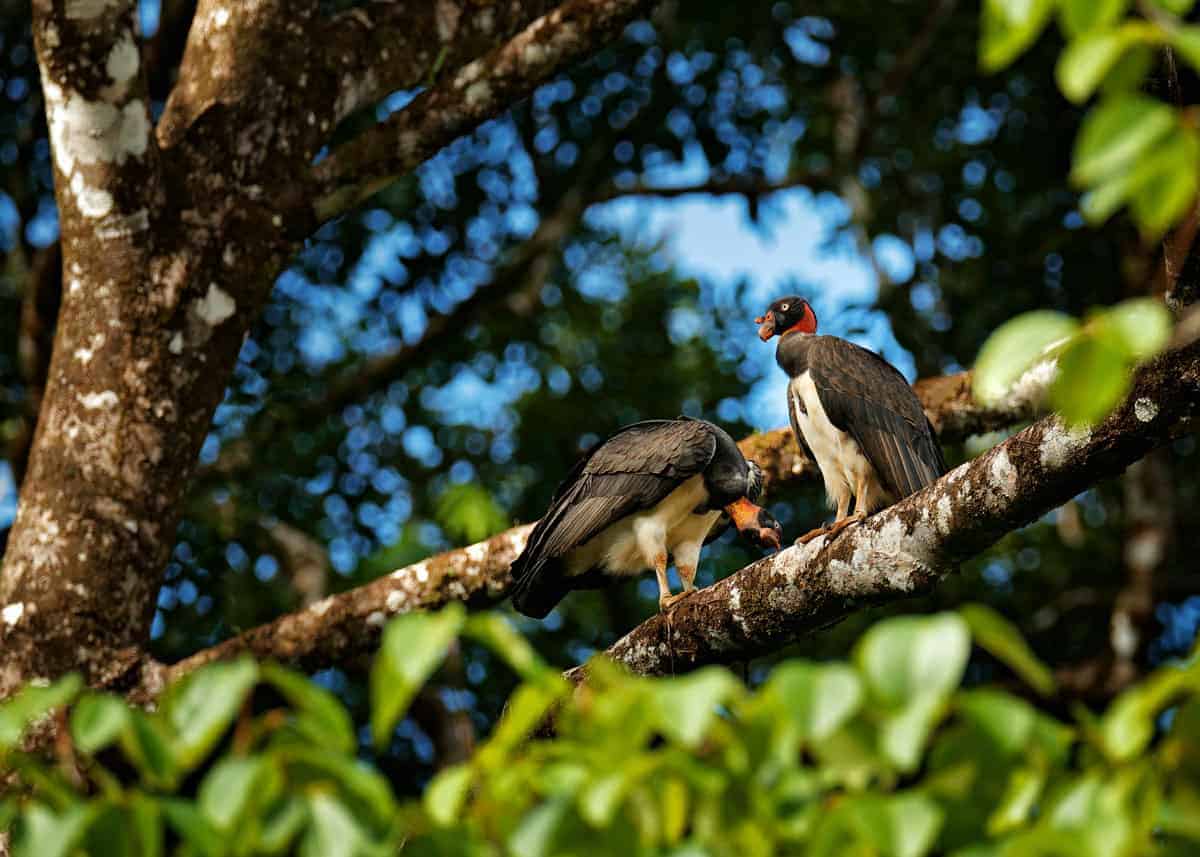
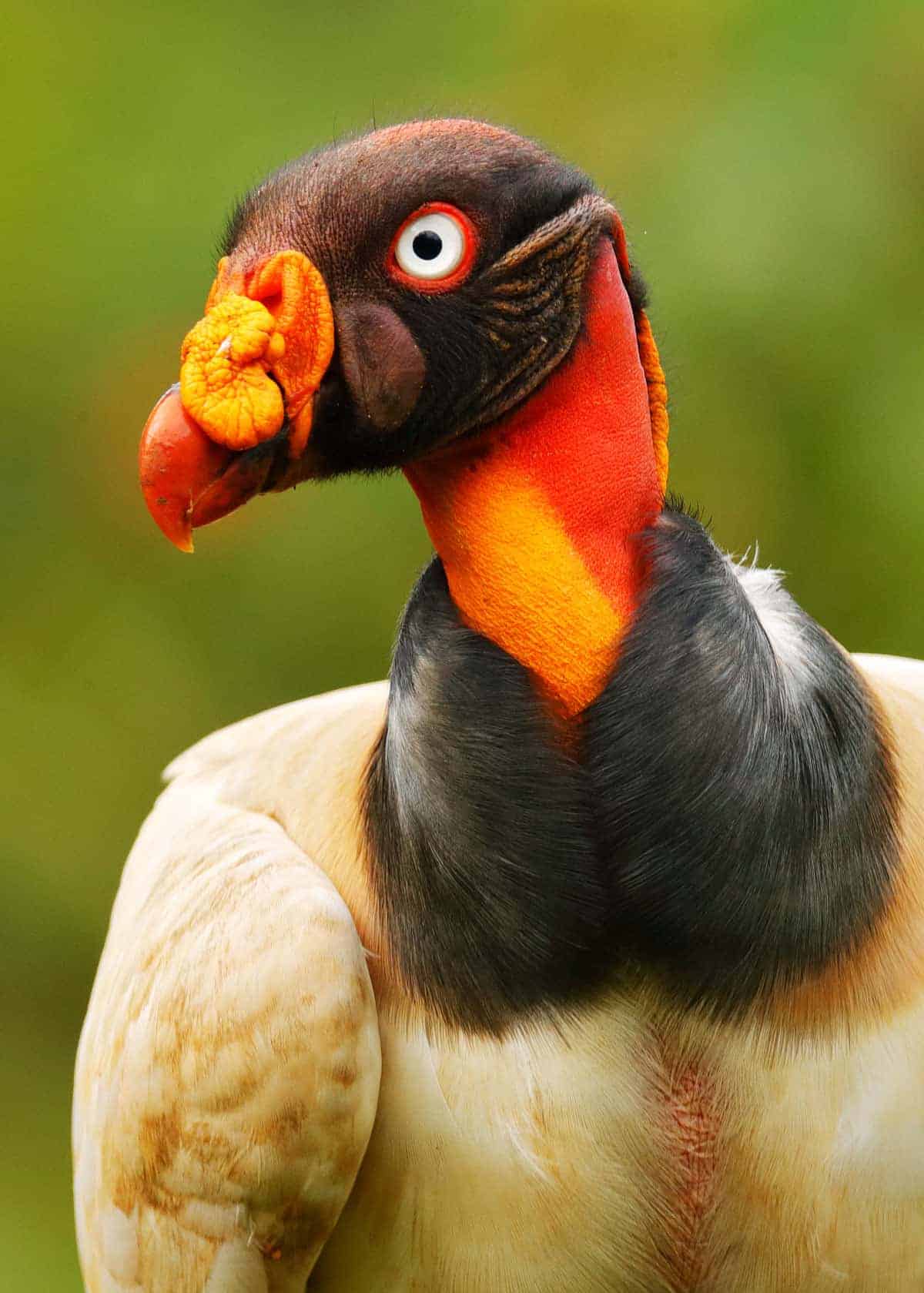
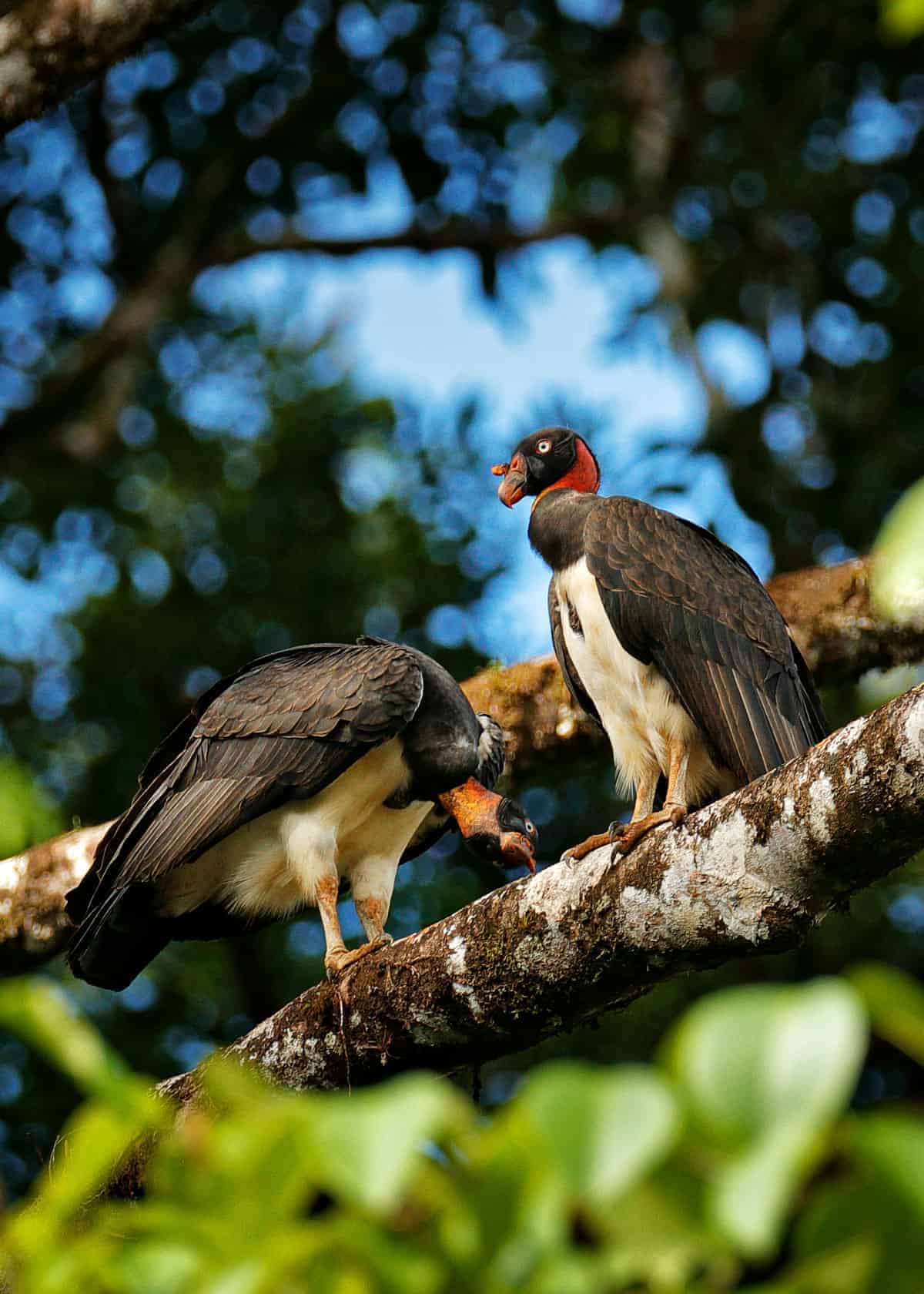
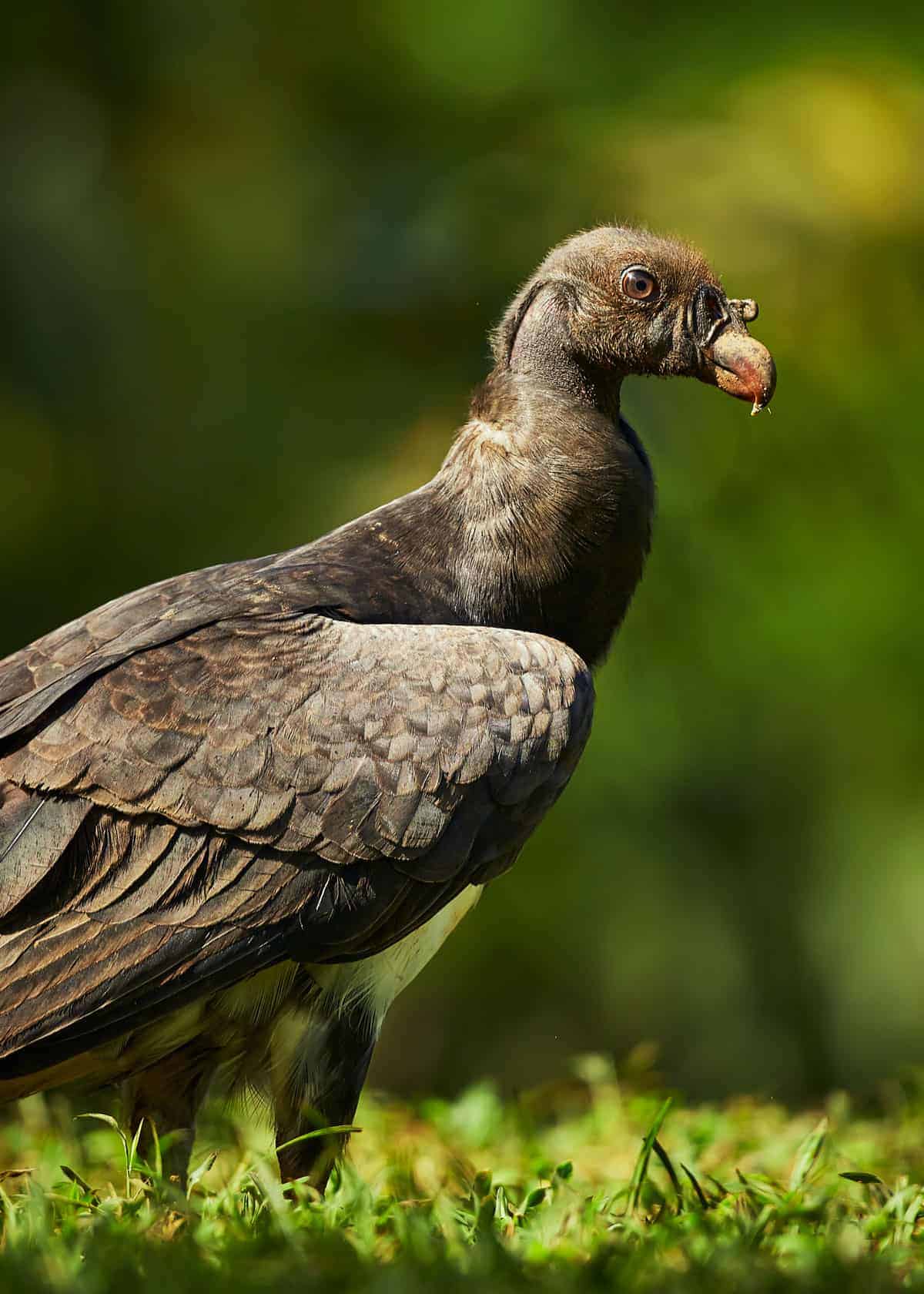
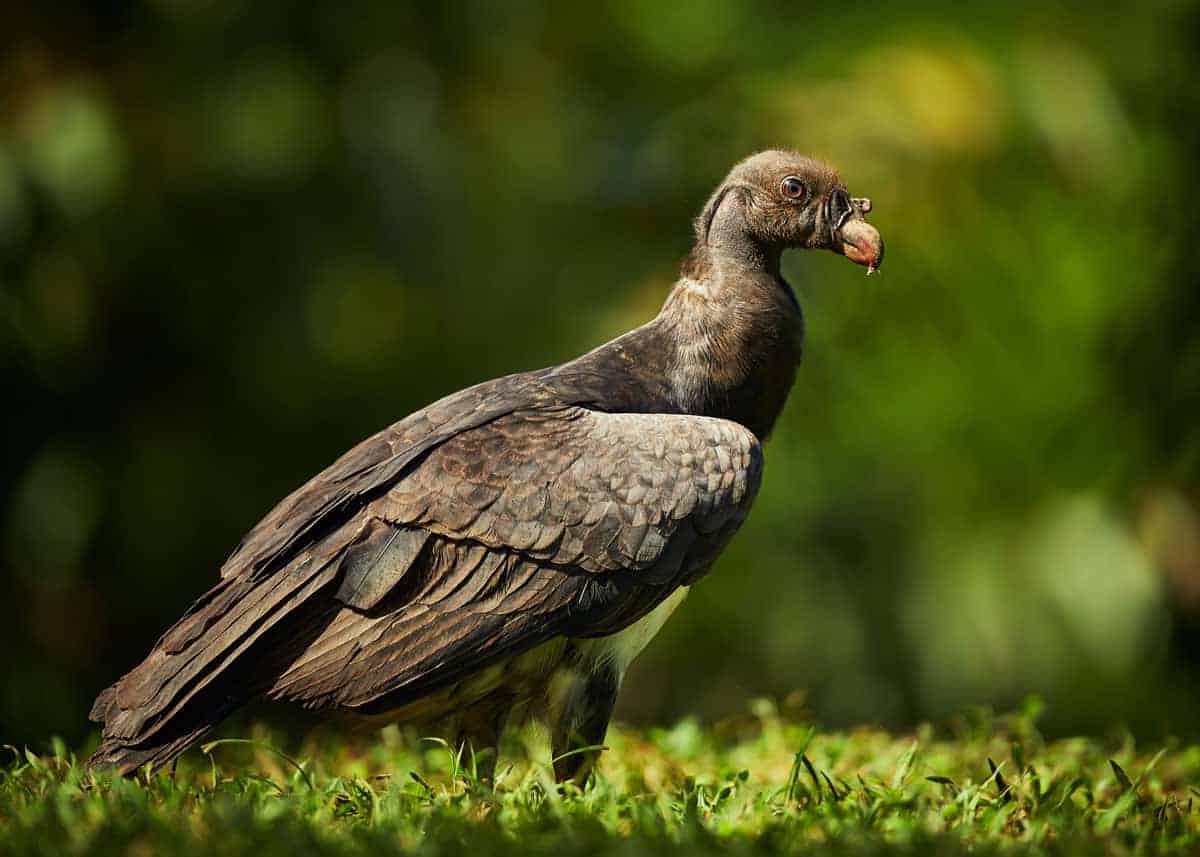
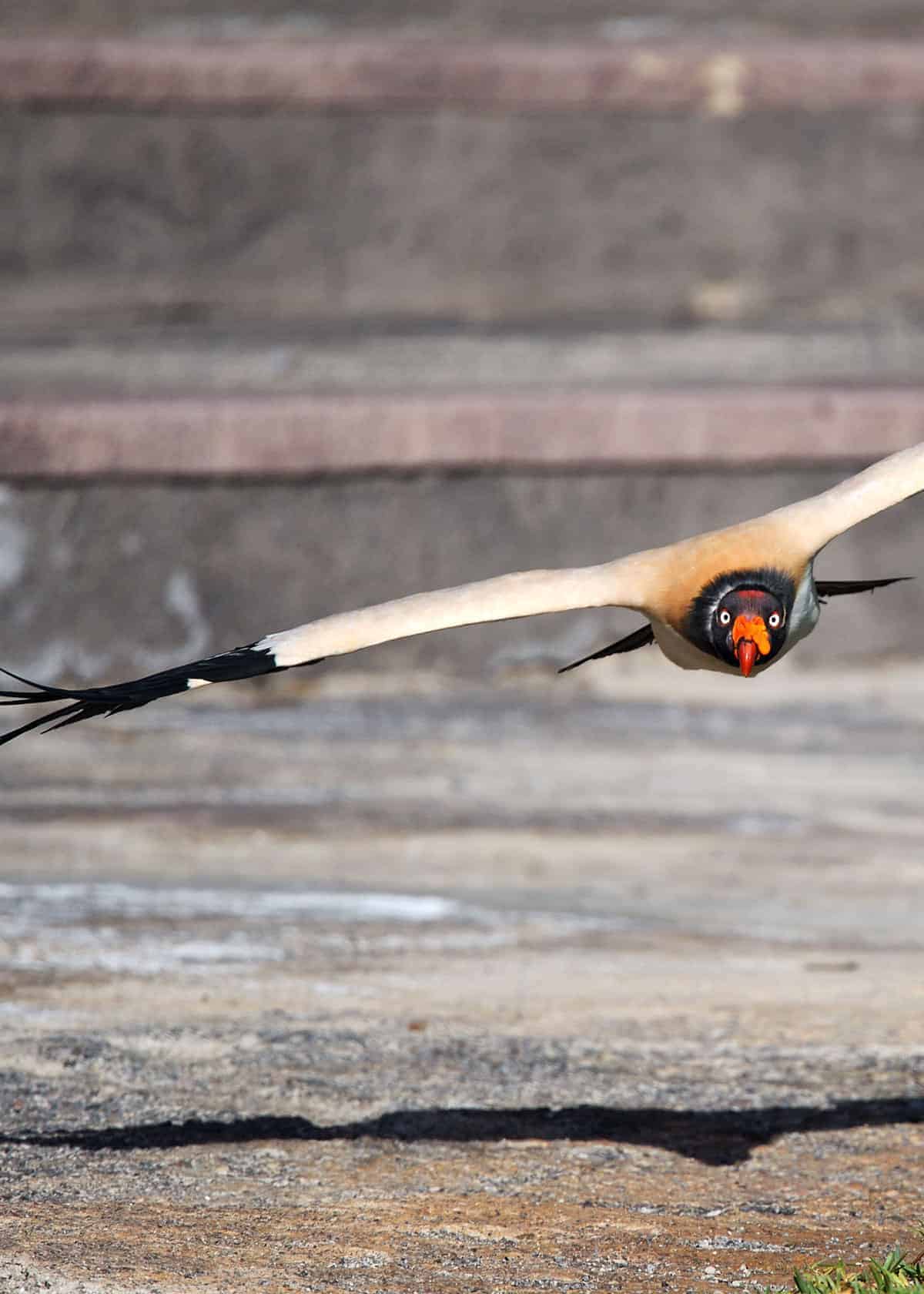
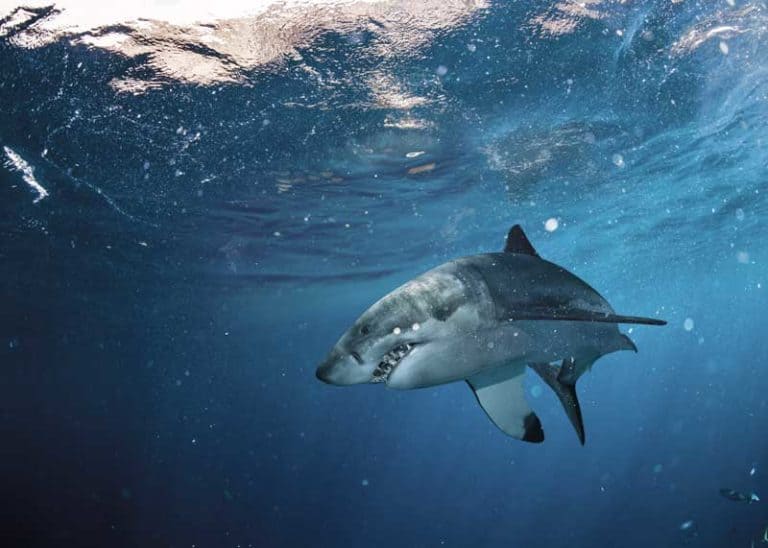
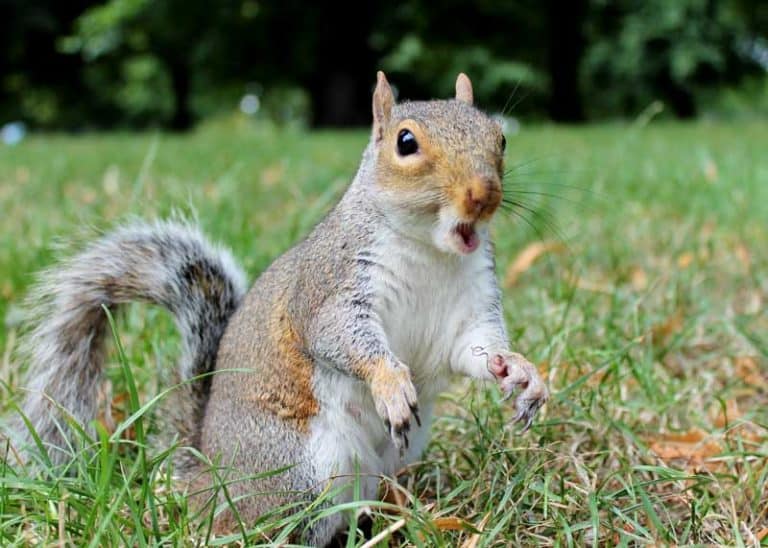
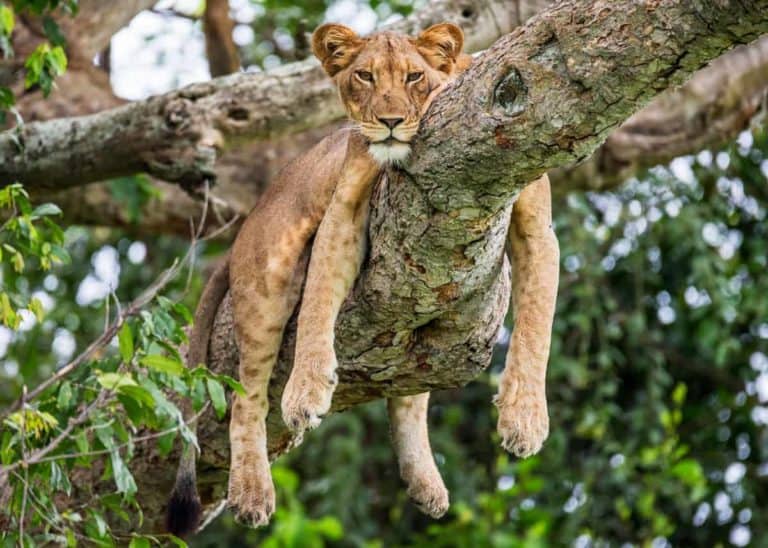

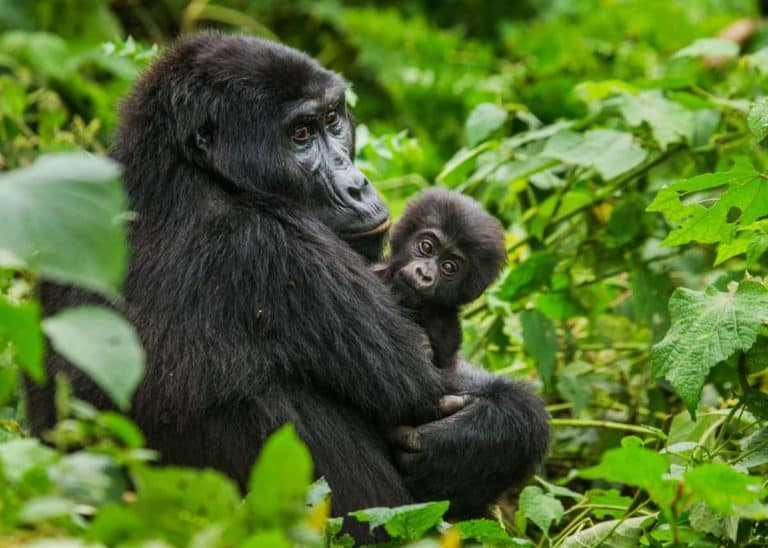
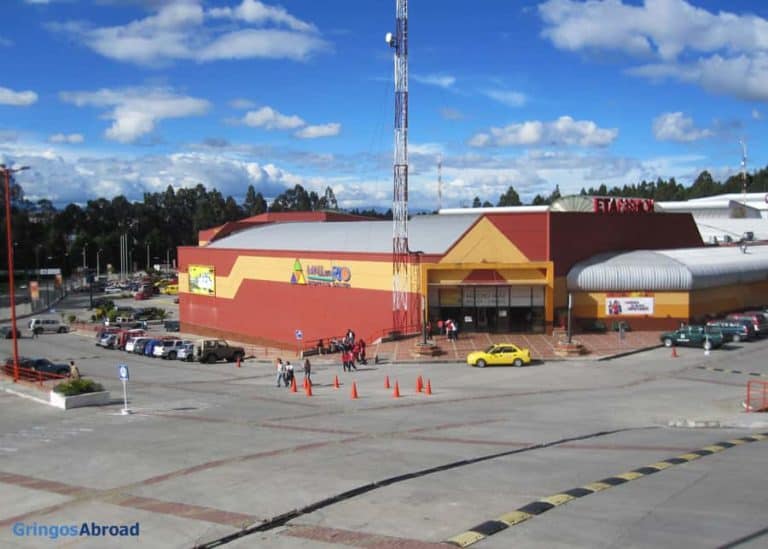
thank you, this was rly interesting and I learnt a lot!